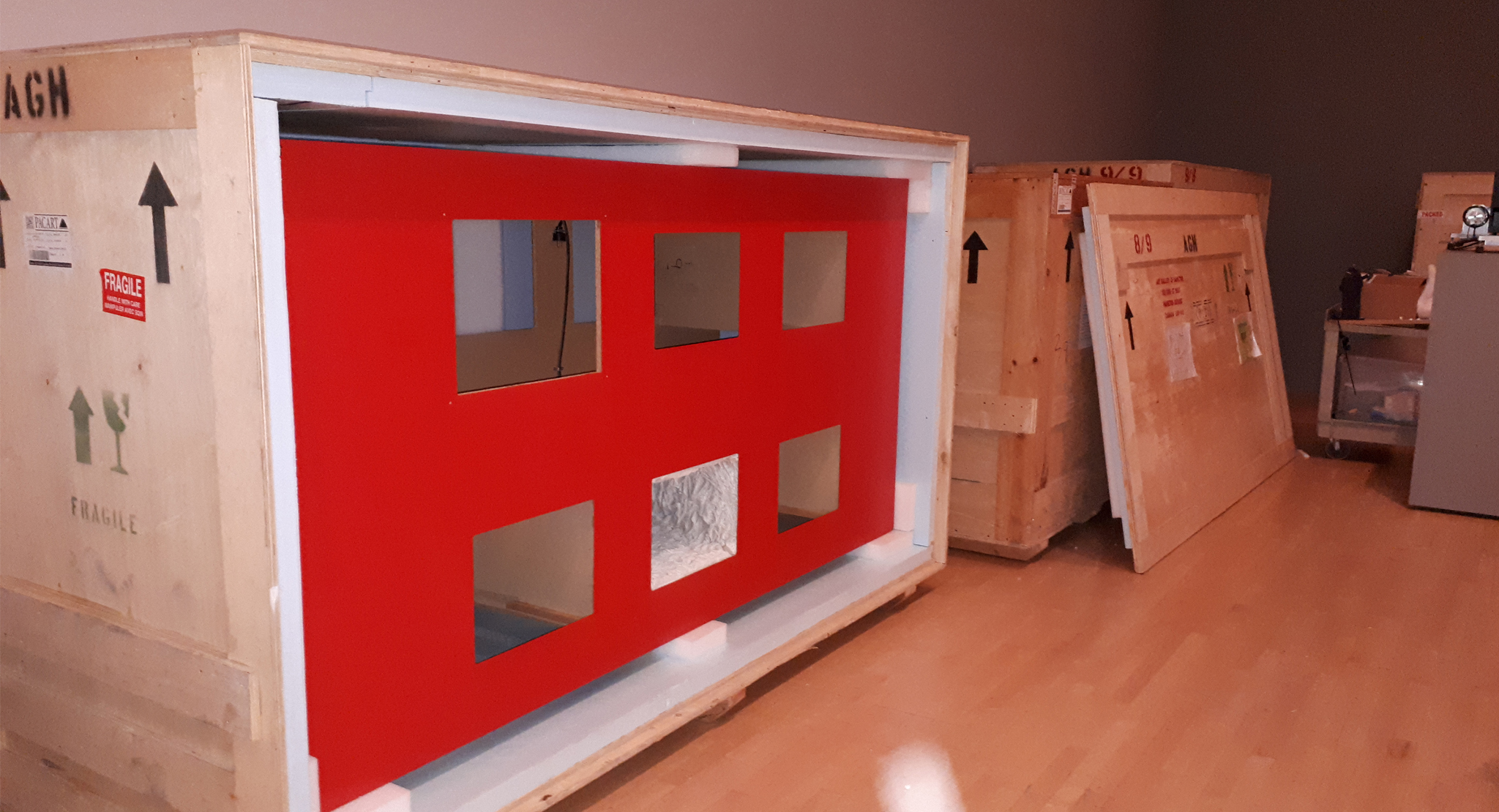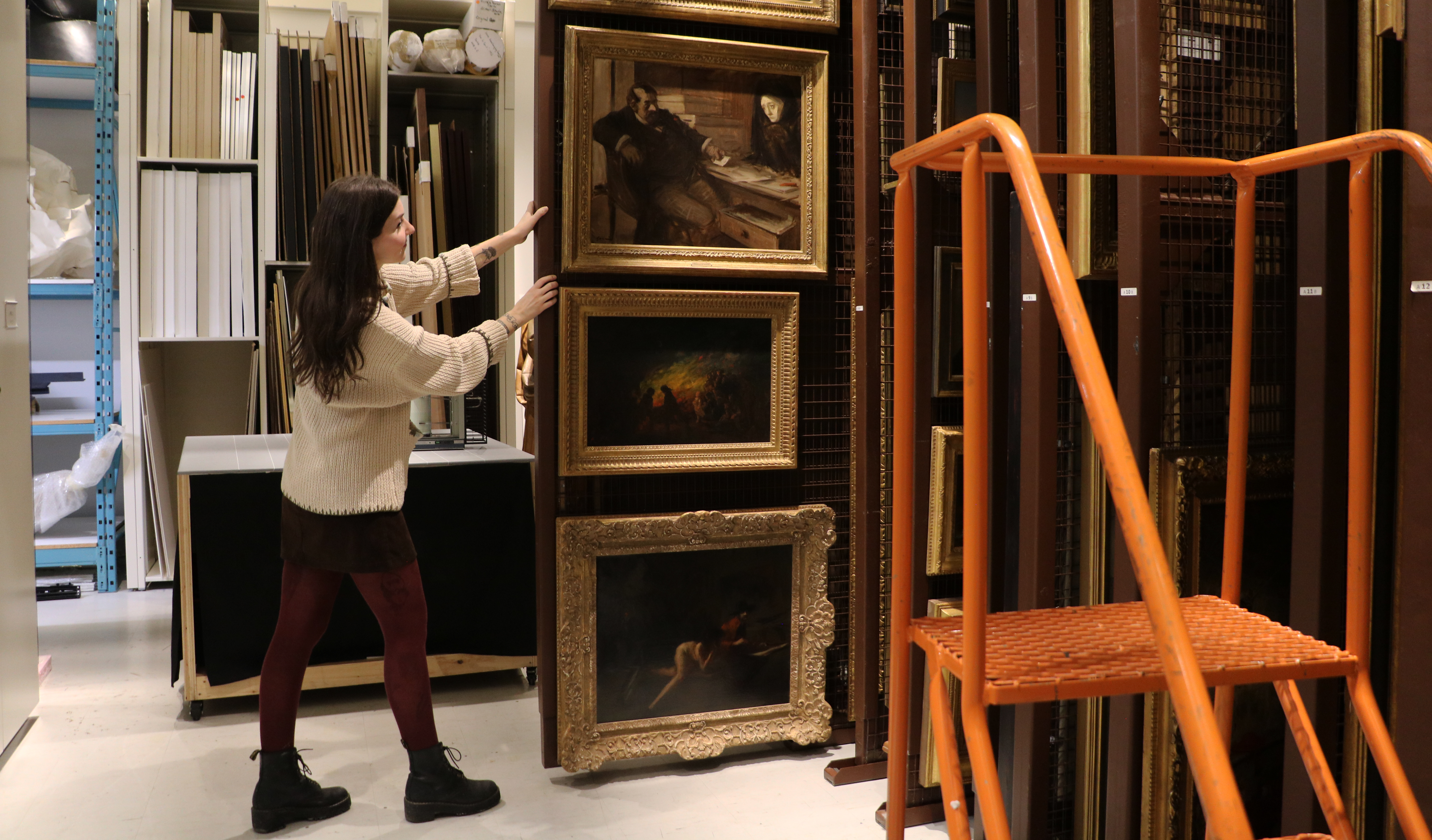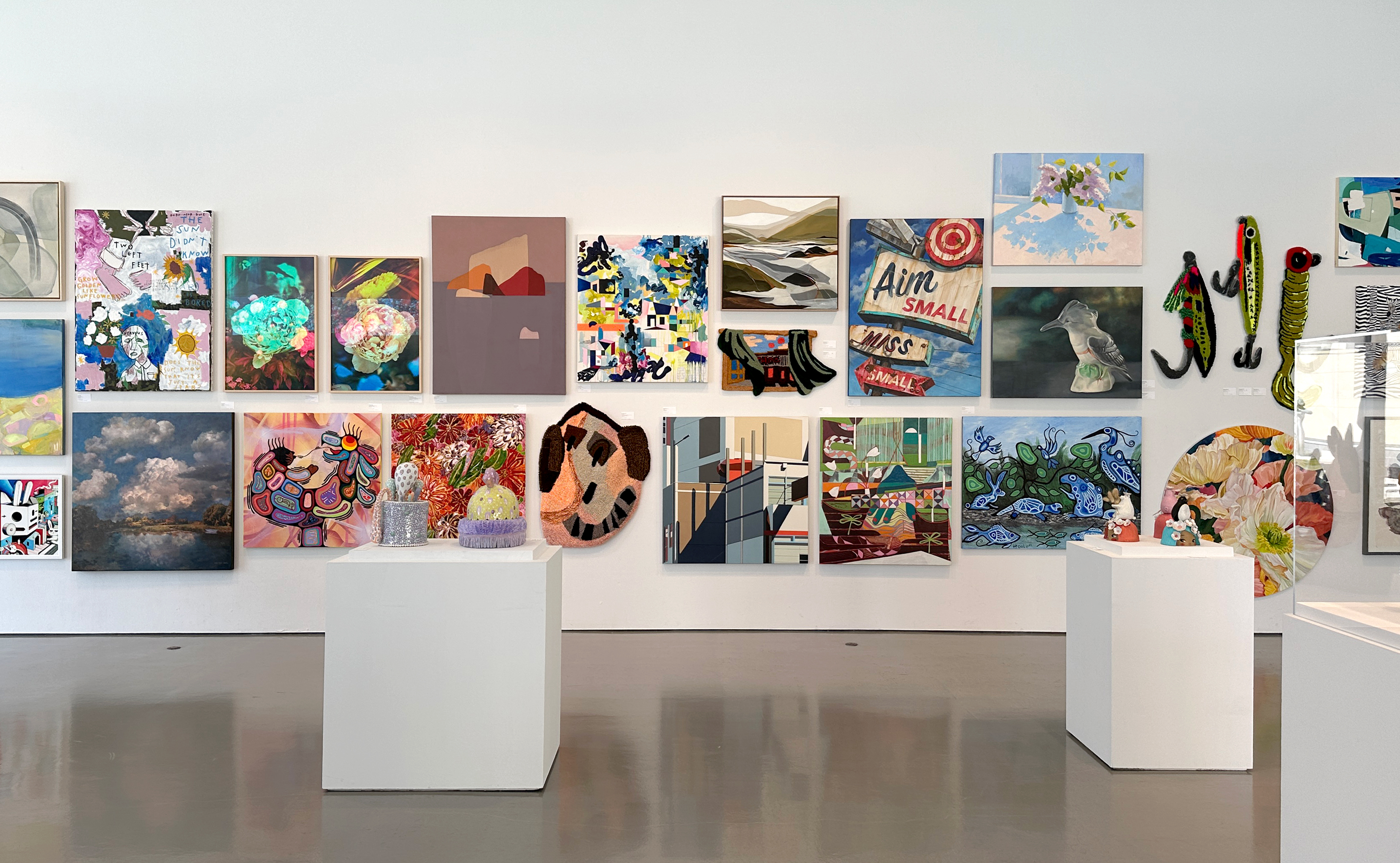Let me begin by telling you that writing is not in my comfort zone. As a preparator at the Art Gallery of Hamilton, I am most comfortable in the exhibition and storage spaces of the AGH. You know, behind the scenes. Normally you would find me on a ladder or pulling along a grey Rubbermaid tool cart loaded with my tools of choice: levels, hammers, tape measures, maybe a pencil if you are lucky, and always razor blades. But these last few months have been somewhat different for all of us, so much so, that today I am armed with a new tool: my laptop. Maybe I will look back on this as a great opportunity to challenge myself and not just the time I baked through a 20kg bag of flour! So let’s pull on our black hair bands and talk some prep.
The idea was put forward by “someone” — let’s call her CHRISTINE— that since the exhibition Early Snow: Michael Snow 1947–1962 is currently on display at the Gallery, maybe I could write about my courier trip last year to Los Angeles. For this trip I was responsible for the de-installation of the AGH’s massive sculpture Redifice by Michael Snow. This sculpture is one of over 10,000 artworks that belong to the AGH’s permanent collection and one of the largest. It is also a later work by Snow from the 1980s and therefore not in the Early Snow exhibition (trust me I kept asking if this piece was going to be in).
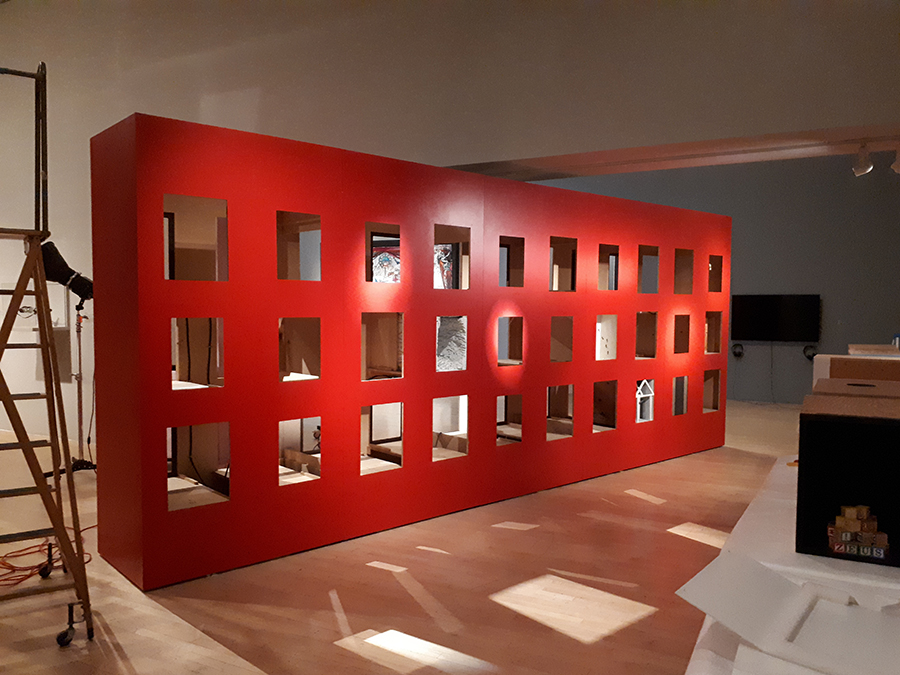
The planning for this courier trip actually started several years ago. Britt Salvesen, a curator from the Los Angeles County Museum of Art (or LACMA), was doing an exhibition on holograms and visited the gallery to do some research on Redifice. She was very interested in it for her exhibition 3D: Double Vision and said she would let us know if she planned to request it for her show. Secretly I thought there is no way this is going to happen, purely for selfish reasons because of the size of this work. Assembled, this sculpture/installation is a large red structure that is 8 feet tall, 20 feet long, and 3 feet wide, containing 9 holograms and 21 sculptural and photographic scenes. Unfortunately, it is not stored assembled. It comes apart in several components and fits into 9 rather large crates.
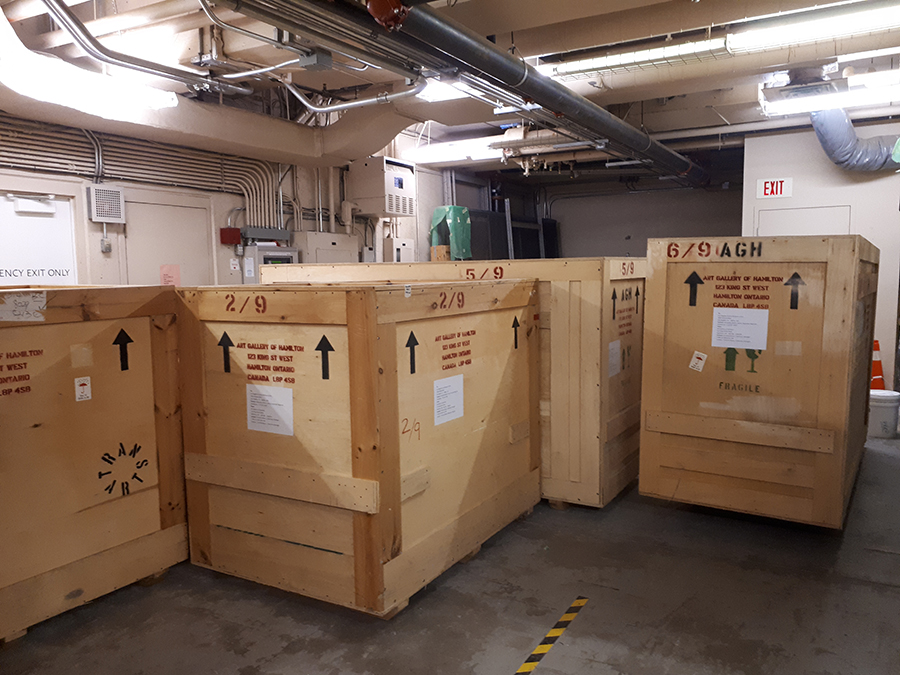
I had honestly filed it on the back burner as something that would not be happening until of course the Gallery received a loan request from LACMA several weeks later. Don’t get me wrong, I love when a work from the AGH travels and gets to shine in another gallery in a different context, and I love to build crates, but this situation was different. Moving this sculpture is like playing a life-sized game of Tetris. Accessing it requires lots of planning and sweat equity, and yes, it’s as glamorous as it sounds! In this case, for Redifice to travel, it needed to be uncrated, conserved, condition reported ,and all the electrical components needed to be checked. This process took my colleague Greg Dawe, Chief Preparator, and me weeks to undertake. However, as part of the loan agreement, and because of the complicated nature of this sculpture, the AGH was required to send someone from our collections team to be present for the installation and de-installation. As preparators at the gallery, we have an intimate knowledge of this sculpture having installed it several times and it made us the ideal candidates to go, especially since the artist himself was unable to be there. Greg went for the install and I was lucky enough to travel for the de-install.
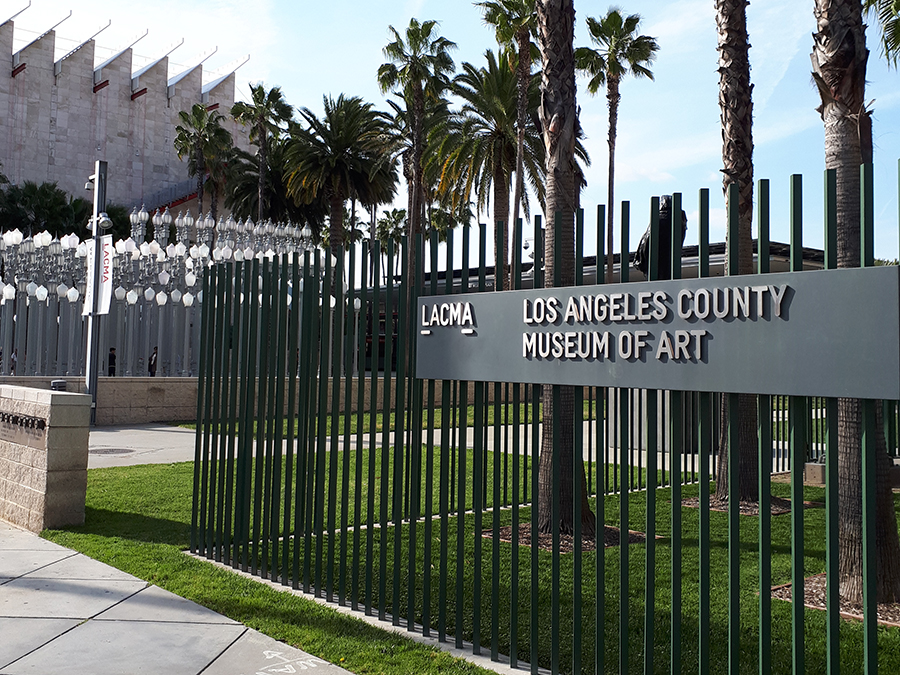
I flew to LA on a Tuesday and was back in Hamilton by Friday. Timing-wise it was not ideal because we were installing the Milli exhibition at the gallery and normally we try not to be absent from exhibition changeovers but this was an exception (for which I am very grateful to my colleagues). As a courier, my job was to oversee and advise on the dismantling, condition report and assist with the re-packing. The prep crew that I worked with at LACMA was lovely. FYI most prep crews are, but no biased opinions here. It took two full days to disassemble and crate the sculpture. The wall comes apart in 5 large components and each one gets its own crate. There is an inner maze of electrical cords that get unplugged and each of the 21 individual vignettes slide out. Some have components that need to be removed for travel and get crated separately and the holograms are removed and packed along with the plexi covers. At the end of the first day just before leaving the crew had, what I thought, a very thorough way of clean up. All the ladders were laid flat on the floor, all the crates were closed, and tall tippy crates were attached to the wall. I told them they didn’t need to be EXTRA cautious on my account but was told that they had to do this because of earthquakes. I have seen a lot of stuff in this business but this was a first for me.
I was also lucky to carve out some time to walk through some of the exhibition spaces and explore LACMA’s permanent collection, which is a perk for me to look at how other institutions install exhibitions. They have an amazing permanent collection with rooms dedicated to Giacometti, Picasso, Matisse, and Richard Serra. There was an exhibition on Robert Rauschenberg (whom I love) and a sculpture garden filled with Alexander Calder works.
It was a pretty dreamy experience and one for which I will always be thankful. I guess what I do now is fly around the world and de-install works by Canadian icons like Michael Snow …… pretty sweet.
